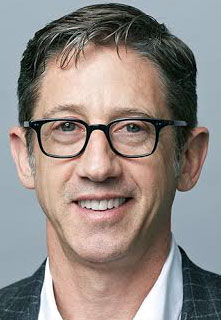

 This month, France Telecom's Lower Indian Ocean Network 2 "LION2" fiber optic cable has been put in service, bringing the total number of cables in East Africa to four. In South Africa it is expecting West Africa Cable System to go live next month. This huge growth in fiber optic cables connecting Africa means that bandwidth costs can go further down but there are many questions for internet service providers, regulators and policy makers... more
This month, France Telecom's Lower Indian Ocean Network 2 "LION2" fiber optic cable has been put in service, bringing the total number of cables in East Africa to four. In South Africa it is expecting West Africa Cable System to go live next month. This huge growth in fiber optic cables connecting Africa means that bandwidth costs can go further down but there are many questions for internet service providers, regulators and policy makers... more
 Traditionally, top-level domains (TLDs) have been almost exclusively marketed by registries through their registrar channel. In a never-ending cycle of driving and sustaining sales, registries often resort to discounting and "promotional pricing." The competition for prime shelf space for a TLD is fierce, with sales and distribution largely controlled by the channel... In this chaotic and cluttered channel, it's not surprising that TLDs have traditionally been less than successful in defining their brand and delivering a unique value story for their product. more
Traditionally, top-level domains (TLDs) have been almost exclusively marketed by registries through their registrar channel. In a never-ending cycle of driving and sustaining sales, registries often resort to discounting and "promotional pricing." The competition for prime shelf space for a TLD is fierce, with sales and distribution largely controlled by the channel... In this chaotic and cluttered channel, it's not surprising that TLDs have traditionally been less than successful in defining their brand and delivering a unique value story for their product. more
 I first became familiar with DNSSEC around 2002 when it was a feature of the Bind9 server, which I was using to setup a new authoritative DNS platform for customers of the ISP I was working for. I looked at it briefly, decided it was too complex and not worth investigating. A couple of years later a domain of a customer got poisoned in another ISPs network. And while the DNS service we provided was working properly, the customers impression was we hadn't protected them. more
I first became familiar with DNSSEC around 2002 when it was a feature of the Bind9 server, which I was using to setup a new authoritative DNS platform for customers of the ISP I was working for. I looked at it briefly, decided it was too complex and not worth investigating. A couple of years later a domain of a customer got poisoned in another ISPs network. And while the DNS service we provided was working properly, the customers impression was we hadn't protected them. more
 At the start of the TAS outage, I said ICANN had a great opportunity to get its crisis management right by communicating properly. Now, nearly two weeks after the application window was supposed to close, ICANN has clearly done just that... But clearly, communication isn't the only parameter in crisis management. At some point, you also need to act. more
At the start of the TAS outage, I said ICANN had a great opportunity to get its crisis management right by communicating properly. Now, nearly two weeks after the application window was supposed to close, ICANN has clearly done just that... But clearly, communication isn't the only parameter in crisis management. At some point, you also need to act. more
 The business world today features many complex global service activities which involve multiple interconnected service providers. Customers normally expect to execute a single paid transaction with one service provider, but many service providers may assist in the delivery of the service. These contributory service providers seek compensation for their efforts from the initial provider. However, within a system of interdependent providers a service provider may undertake both roles of primary and contributory provider, depending on the context of each individual customer transaction. more
The business world today features many complex global service activities which involve multiple interconnected service providers. Customers normally expect to execute a single paid transaction with one service provider, but many service providers may assist in the delivery of the service. These contributory service providers seek compensation for their efforts from the initial provider. However, within a system of interdependent providers a service provider may undertake both roles of primary and contributory provider, depending on the context of each individual customer transaction. more
 DNSSEC continues to gain momentum as network operators and domain owners watch and learn from early adopters. The learning process is made easier by efforts such as the ongoing work conducted by researchers at Sandia labs to methodically identify and categorize the kinds of problems that are occurring. more
DNSSEC continues to gain momentum as network operators and domain owners watch and learn from early adopters. The learning process is made easier by efforts such as the ongoing work conducted by researchers at Sandia labs to methodically identify and categorize the kinds of problems that are occurring. more
 The sixth annual Counter-eCrime Operations Summit (CeCOS VI) will engage questions of operational challenges and the development of common resources for the first responders and forensic professionals who protect consumers and enterprises from the ecrime threat every day. This year's meeting will focus on the shifting nature of cybercrime and the attendant challenges of managing that dynamic threatscape. more
The sixth annual Counter-eCrime Operations Summit (CeCOS VI) will engage questions of operational challenges and the development of common resources for the first responders and forensic professionals who protect consumers and enterprises from the ecrime threat every day. This year's meeting will focus on the shifting nature of cybercrime and the attendant challenges of managing that dynamic threatscape. more
 A number of conversations have recently converged on a single problem: how to match applications to network access. Let's unpeel this issue... When I was Chief Analyst at Telco 2.0, we proposed there was a significant untapped market opportunity for network operators to bundle together access with content, applications or services. The revenue opportunity is to charge the providers of those services for delivering fit-for-purpose data at bulk wholesale prices. This is the "postage problem"... more
A number of conversations have recently converged on a single problem: how to match applications to network access. Let's unpeel this issue... When I was Chief Analyst at Telco 2.0, we proposed there was a significant untapped market opportunity for network operators to bundle together access with content, applications or services. The revenue opportunity is to charge the providers of those services for delivering fit-for-purpose data at bulk wholesale prices. This is the "postage problem"... more
 Since the establishment of the RIPE NCC, 5,000 Local Internet Registries (LIRs) have closed. We wanted to find out why. Many of them were probably victims of the burst of the dotcom bubble. But how many? And which countries were mostly affected? How many closures were the results of mergers? We've got answers. more
Since the establishment of the RIPE NCC, 5,000 Local Internet Registries (LIRs) have closed. We wanted to find out why. Many of them were probably victims of the burst of the dotcom bubble. But how many? And which countries were mostly affected? How many closures were the results of mergers? We've got answers. more
 DNS is not something that most people think about when using the Internet. Neither should they have to: the DNS is just part of the infrastructure in the same way that IP addresses are. The only time a user ought to notice the DNS is when it breaks (and it should never break). If that's true, then we ought to expect any Internet client - including web browsers - to use the very same infrastructure as everything else and for the DNS resolution mechanisms to be the ones offered by the operating system. What makes browsers different? more
DNS is not something that most people think about when using the Internet. Neither should they have to: the DNS is just part of the infrastructure in the same way that IP addresses are. The only time a user ought to notice the DNS is when it breaks (and it should never break). If that's true, then we ought to expect any Internet client - including web browsers - to use the very same infrastructure as everything else and for the DNS resolution mechanisms to be the ones offered by the operating system. What makes browsers different? more
 Although ICANN is now getting a lot of ridicule for the "glitch" in its TLD application System, it deserves some praise and respect for the results of its April 10 board meeting. In that meeting, the board showed the involved community - and the rest of the world - that it is no longer going to be stampeded by extra-procedural political pressure to make yet another round of hasty amendments to its new TLD program's policies and procedures. more
Although ICANN is now getting a lot of ridicule for the "glitch" in its TLD application System, it deserves some praise and respect for the results of its April 10 board meeting. In that meeting, the board showed the involved community - and the rest of the world - that it is no longer going to be stampeded by extra-procedural political pressure to make yet another round of hasty amendments to its new TLD program's policies and procedures. more
 Last week, the Internet Corporation for Assigned Names and Numbers (ICANN) was forced to extend the deadline for the new gTLD application to April 20th, after the application system crashed and the technical issue which enabled some applicants to see file names and user names that belonged to other applicants. ... ICANN's decision to extend the deadline is reasonable in the circumstances. more
Last week, the Internet Corporation for Assigned Names and Numbers (ICANN) was forced to extend the deadline for the new gTLD application to April 20th, after the application system crashed and the technical issue which enabled some applicants to see file names and user names that belonged to other applicants. ... ICANN's decision to extend the deadline is reasonable in the circumstances. more
 There were long faces all over the new gTLD ecosystem yesterday -- applicants, consultants and technical operators alike -- when ICANN took their Application System (TAS) offline and announced that it would not be brought back up for 5 days. As a result, the long-anticipated close of the first new gTLD application window was pushed back from April 12 to April 20, 23:59 UTC. You could almost hear the groans of dismay spreading over social cyberspace! more
There were long faces all over the new gTLD ecosystem yesterday -- applicants, consultants and technical operators alike -- when ICANN took their Application System (TAS) offline and announced that it would not be brought back up for 5 days. As a result, the long-anticipated close of the first new gTLD application window was pushed back from April 12 to April 20, 23:59 UTC. You could almost hear the groans of dismay spreading over social cyberspace! more
 Does the "technical issue" announced today in ICANN's TLD Application System (TAS) and the subsequent extension of the submission deadline call into question the stability and integrity of the new gTLD program? This development underscores the notion that ICANN could consider a more metered and staged approach to the introduction of gTLDs... more
Does the "technical issue" announced today in ICANN's TLD Application System (TAS) and the subsequent extension of the submission deadline call into question the stability and integrity of the new gTLD program? This development underscores the notion that ICANN could consider a more metered and staged approach to the introduction of gTLDs... more
 In case you haven't been watching cyber news recently, last week various security researchers published that Macs were infected by the Flashback Trojan and that the total number of infections worldwide was 600,000. This number was published by a couple of blogs. I debated writing about this topic since we had a previous Mac outbreak last year that initially spiked up, caused Apple to go into denial about the affair before issuing a fix, and then the malware kind of went away. Will this follow the same pattern? more
In case you haven't been watching cyber news recently, last week various security researchers published that Macs were infected by the Flashback Trojan and that the total number of infections worldwide was 600,000. This number was published by a couple of blogs. I debated writing about this topic since we had a previous Mac outbreak last year that initially spiked up, caused Apple to go into denial about the affair before issuing a fix, and then the malware kind of went away. Will this follow the same pattern? more
Sponsored byWhoisXML API

Sponsored byDNIB.com

Sponsored byIPv4.Global

Sponsored byVerisign

Sponsored byRadix

Sponsored byCSC

Sponsored byVerisign
